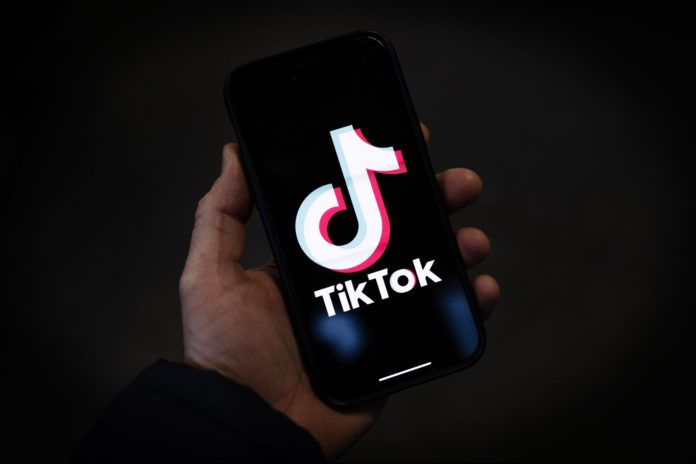Opinions expressed by Entrepreneur contributors are their own.
At this point in the app’s life, you either get TikTok or you don’t. For those who don’t, it may seem like just another social media platform, but in reality, TikTok has become a powerhouse platform for social commerce, with over a billion users.
Social commerce isn’t the traditional ecommerce experience; it’s social media platforms being used to move a customer completely through a buyer’s journey. It’s also growing; it’s estimated the social commerce opportunity will reach $1.2 trillion by 2025.
TikTok’s explosion has solidified the rise of a social commerce model that will never go away. It’s so incredibly easy to consume and so personalized to the user that it lends itself to an overwhelmingly positive buyer’s journey, especially for millennials and Gen Z.
57% of TikTok users have been inspired to purchase a product they saw in their feed, and the hashtag #TikTokMadeMeBuyIt exists because of this. It’s word-of-mouth marketing that comes straight from an endless stream of algorithm-chosen influencers.
Related: What Brands Need to Know About Social Commerce
“Shoppertainment” and TikTok’s Infinite Loop
TikTok acknowledges that its platform offers a non-linear retail path because of its hyper-personalized experience—they call it an infinite loop. Consumers don’t always go through a traditional marketing funnel in one quick pass; they weave in and out at different stages based on their needs at the moment.
The engine of the infinite loop is TikTok’s community of users, who engage with TikTok at every stage of their customer journey: exploring new brands, making a purchase and creating content that drives brand engagement. TikTok likes to call this content “shoppertainment” — shoppable entertainment. With so many users creating an immense amount of diverse video content and a powerful algorithm to deliver it into an infinitely scrolling feed, the “ads” are enjoyed like all the other content.
When users come across a video with a product tagged, it’s incredibly easy to find out more about the product and the brand. The platform has tools for live shopping, shoppable videos, and a product showcase. Ecommerce giants like Shopify have begun to offer an integration of their services with TikTok; it minimizes switching between apps, making a transaction effortless.
No matter how people like to make a purchase, there is an accessible option for them to press “Buy.” TikTok has optimized the ecommerce experience by getting from trustworthy word-of-mouth to a traditional product gallery (with product images on a white background) in a single tap.
Related: TikTok Looks to Tackle E-Commerce Giants Like Amazon With Its Latest Move
Playing catch-up
Not every platform was ready for TikTok’s dominance, and now other tech companies are following suit, trying to replicate the same lightning TikTok already bottled.
Amazon is using its new feature, Inspire, in the Amazon Shopping app to show photos and videos of products from other customers and influencers. It’s a similar infinite scroll of content, but it isn’t the main feature of the app like it is for TikTok. Shoppers have to choose to use Inspire, while TikTok adds product content to the user’s feed at the right time and place.
Instagram has similar social commerce tools on its platform, but its algorithm struggles to compete with TikTok’s. TikTok recommends videos with an equal chance of success, while Instagram’s algorithm caters to influencers. Only the entertaining videos succeed on TikTok, while Instagram users feel a disingenuous push of influencer content into their feeds.
Even though social commerce continues to be integrated into platforms, it’s being adopted at different rates.
The US and Social Commerce
In 2022, the Asia Pacific region accounted for 70.3% of the social commerce market share. North America trailed behind, but the US market is expected to grow at a CAGR of nearly 29.3%. Some social commerce trends have yet to catch on in the U.S., though — one of which is live streaming.
The livestream sales industry in China was accelerated by Covid-19, and U.S. tech companies have since tried to replicate its success. Meta, Amazon, and TikTok have struggled to get U.S. users to adopt the long-form format of livestream sales, though. This slow adoption may be due to a difference in commerce culture: Americans don’t really like it when they’re sold to.
Traditionally, when it comes to shopping online, Americans love pictures. In one survey, 83% of US smartphone users found product images to be more influential while researching for a purchase, while only 36% were influenced by a product video. When one in four small businesses still lacks an online store, it’s hard to justify paying money for consistent video content. You can’t expand into social commerce until you’ve tapped into ecommerce.
A changing landscape
We don’t know what the next big app or platform will be. No matter what, the next generation always rejects what the previous generation has adopted. Facebook isn’t even the same platform it was five years ago; it’s more useful for reaching an older demographic. Courting internet users over 50 on TikTok isn’t going to be as successful as you hope.
The digital commerce landscape shifts like the sands in a desert, having real-world ramifications. As ecommerce and social commerce continue to explode, we’ll continue to see brick-and-mortar close. TikTok and video content won’t save the mom-and-pop shops most at risk, as it’s been predicted more than 50,000 retail locations could close over the next five years.
TikTok may not seem as stable, with recent clashes with lawmakers and a total ban in Montana, yet it remains a global juggernaut. People aren’t going to stop using TikTok overnight, so relying on it as a social commerce platform is a safe bet for now.
As tools and strategies trend in social commerce, new technology will eventually usurp TikTok. We don’t know what comes next, but right now, we do know that people want to interact with brands and products through video on TikTok and social media. So, in the meantime, keep an eye on the trends, listen to what people have to say, and just keep scrolling.






